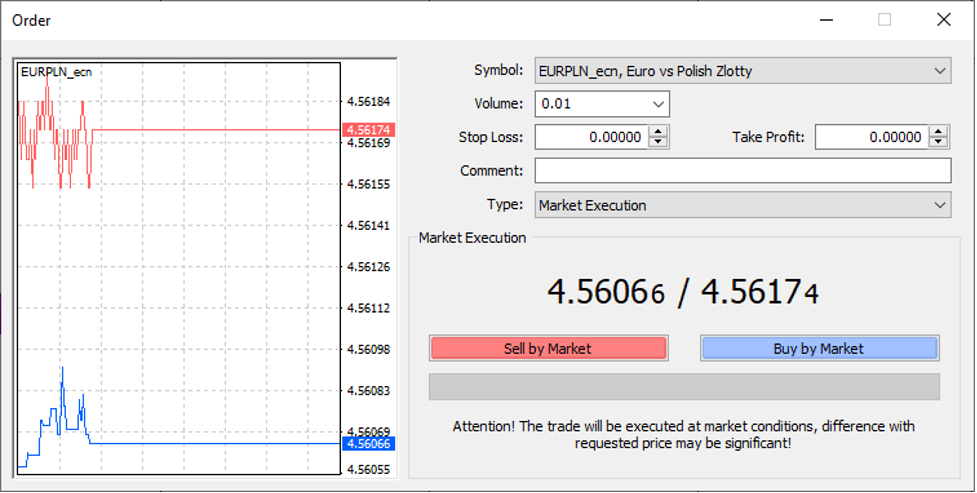EURPLN cross – quotes and trading
If you are interested in trading the EURPLN cross, open our Metatrader 4 platform and find the EURPLN cross in the symbols. When you click on the new order, the following window will appear.

Source: Purple Trading Metatrader 4
As you can see, the spread between the Ask and the Bid price is ten pips, but the spread can fluctuate slightly, mainly during volatile times of the day.
Lot value calculation
The minimum amount to trade is 0.01 lot, while one lot represents 100,000 EUR. So, if you are trading 0.01 lot (or a micro lot), you will be trading 1,000 EUR. The 0.1 lot is also called a mini lot and represents 10,000 EUR. If you want to buy or sell half a lot, you will be trading 50,000 EUR. Two lots are 200,000 EUR and so on.
Besides, you can open a market execution trade, which means that it will be done at the current market price, or you may use pending orders – limit and stop orders. Finally, it is possible to use the stop-loss and take-profit orders when opening the trade, or you can add them later when the deal is live.